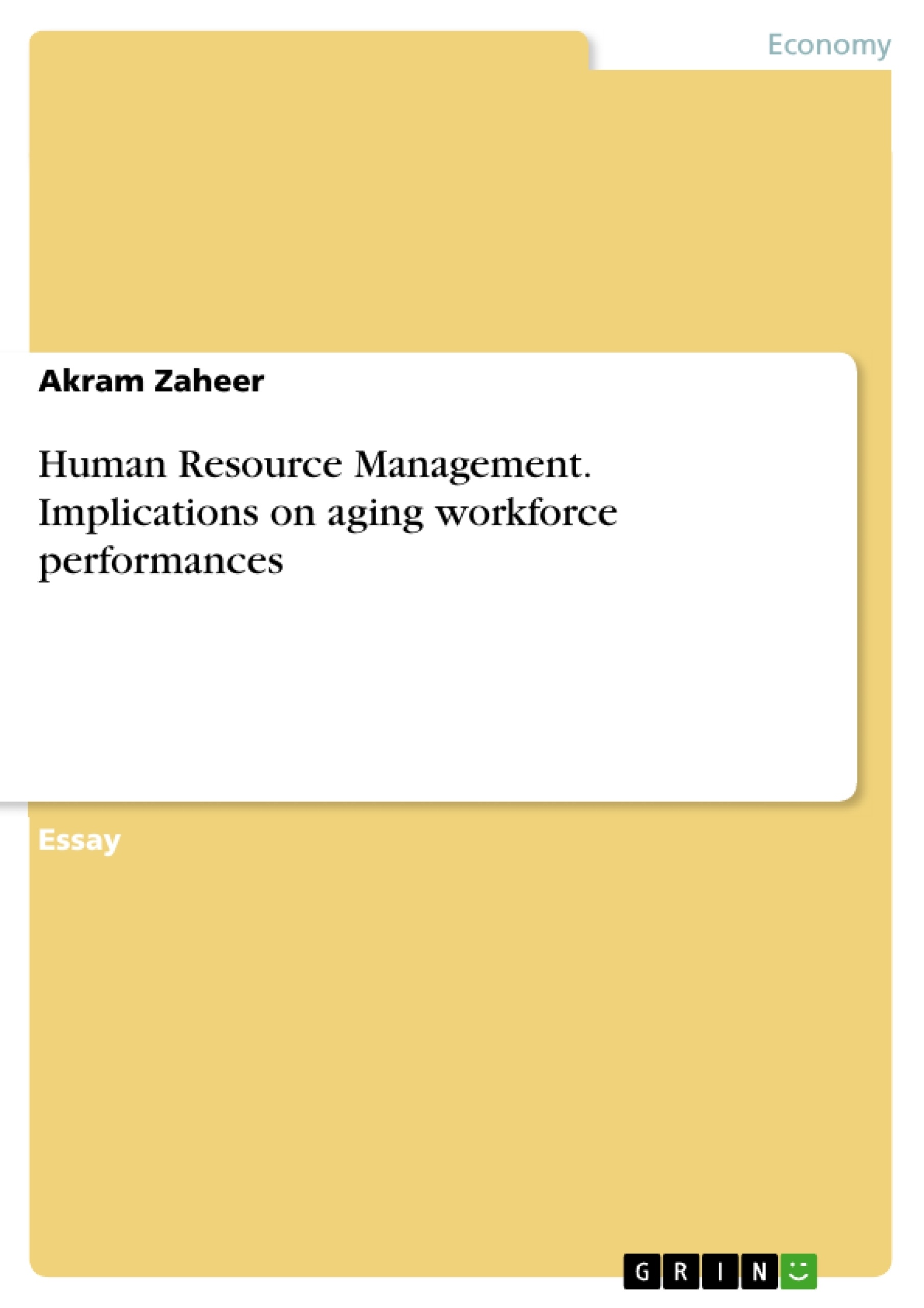This Study elaborates the aging population or workforce related issues faced by every organization all over the world like Absenteeism, Retirement/ Superannuation, work-related health and safety, Job design or Flexible work arrangements, Recruitment and selection, Training and development, Compensation, rewards and recognition and high turnover. The goal of this particular effort is to recognize the problem areas along with problems experienced by all HRM (human resource management) due to the aging workforce.
This study furthermore explores practical implication along with what adaptation work extremely well in order to possess to solve that particular problem which HRP (human resource professional) face with aging workforce in organization. In This study followed the qualitative analysis systems through which qualitative method can be used on gather secondary data as well as understand the facts. Some sorts of synthesis of existing literary works upon older workforce or aging population such as research paperwork, meetings as well as training reviews etc. is utilized to recognize important elements of growing older population after which integration of these factors is done right after categorizing these elements/variables. This study can help human resource managers to understand and solve the problems, related to, training and development programs and retaining older workforce, job design etc.
Inhaltsverzeichnis (Table of Contents)
- Introduction
- Literature Review
- Job Design
- Training and Development
- Remuneration, Rewards and Recognition
- Health and Safety
- Retirement/Superannuation
- Job Satisfaction
- Conceptual Model
- Conclusion
- Reference
Zielsetzung und Themenschwerpunkte (Objectives and Key Themes)
This study aims to examine the challenges faced by organizations in managing an aging workforce. It focuses on issues like absenteeism, retirement, work-related health and safety, job design, recruitment, training, compensation, and turnover. The study explores practical implications and solutions for human resource professionals dealing with an aging workforce.
- Challenges of managing an aging workforce
- The impact of an aging workforce on human resource management (HRM) functions
- Practical solutions for managing an aging workforce
- The importance of adapting HRM practices to accommodate the needs of older workers
- The benefits of retaining older workers in the workforce
Zusammenfassung der Kapitel (Chapter Summaries)
The introduction discusses the growing global trend of an aging workforce and the implications for HRM. It highlights challenges and opportunities associated with managing older employees.
The literature review delves into the impact of an aging population on the workforce, examining the challenges posed by increased retirement rates, health concerns, and skill gaps. It provides context for the study by discussing existing research on managing aging workforces.
The section on job design explores how organizations can adapt job structures and roles to accommodate the needs of older workers. It discusses strategies for fostering flexibility, work-life balance, and career development opportunities for older employees.
The chapter on training and development examines the role of education and training in supporting older workers. It discusses the importance of providing continuous learning opportunities to ensure older workers remain competitive and engaged.
Schlüsselwörter (Keywords)
The main keywords of this text are: HRM, aging workforce, job design, job satisfaction, remuneration, training and development, health and safety. These keywords represent the core concepts and themes explored in the study, emphasizing the importance of managing an aging workforce effectively.
- Citar trabajo
- Akram Zaheer (Autor), 2012, Human Resource Management. Implications on aging workforce performances, Múnich, GRIN Verlag, https://www.grin.com/document/340719




